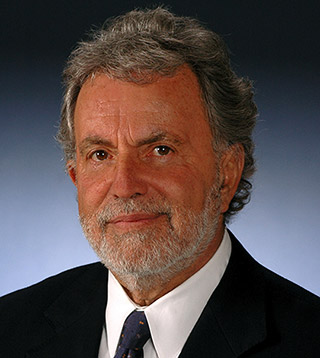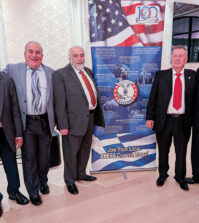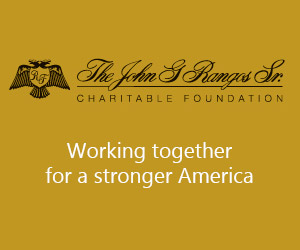At the Movies with Sid Ganis
The legendary Hollywood studio honcho and producer on his life making movies
So how does a Greek-Jewish kid from Brooklyn get into the movie business and run several major studios and head the Academy of Motion Pictures Arts and Sciences and become both a friend and colleague to Steve McQueen, Robert Redford, George Lucas, Francis Coppola and countless other marquee names?
“It was not supposed to be happening to me and it was happening to me and I loved it and I feel the same way to this day,” says Sid Ganis, 73, who still sits on the board of the Academy and now runs a production company with his wife Nancy whose most recent offering was the ABC-TV series, Pan Am. “On the other hand, I was always interested in being in the place I was supposedly not supposed to be in. A poor Jewish kid from Brooklyn, a Greek Jew-what am I doing in the middle of Hollywood? What am I doing with Lucille Ball and Robert Redford on All The President’s Men-people like Redford who are friends to this day?”
The man who made movies like Ghost and 48 Hours and The Hunt for Red October and gave the green light to Forrest Gump and working with George Lucas helped model the modern studio that gave inspiration to the likes of Pixar has himself blazed a trail through the movie business like Indiana Jones.
And it all began in Brooklyn—where many show business stories begin.
“I was 19 when I got my very first job as an office boy in this business,” he says. “I fetched the coffee and looked over the shoulders of the men and women who were doing the work. And the work was publicity-publicizing Broadway shows and also individual clients.”
He came home from Brooklyn College one day and told his mother he was not going back to school (he never did) and she said, Now what are you going to do?
“And I said, hmmm, I didn’t quite consider that,” he says. “But I have to do something. I was my mother and father’s son. We were lower-middle class and never in need: we had what to eat and we had family. My father was a blue-collar guy: he was taxi cab driver in New York. His name was Irving, but they called him Ike. His parents came from Ioannina. Anyway, I didn’t know from fancy jobs and I wasn’t going to be a doctor, I wasn’t going to be a lawyer, but I thought about show business. And that’s when I bought the New York Times-we didn’t read the New York Times in our house-we read The Daily News, and in those days there was a paper called The Daily Mirror, as well. But I bought The New York Times to look at the want ads, and sure enough it said: Office boy wanted for show business office. Must want to be in show business. It was right there in the paper. It was a dream come true.”
Only he didn’t get the job. He got a letter back saying it had been filled.
And that’s when Uncle Phil came in.
“My Uncle Phil and Aunt Estelle were not the Greeks,” he says. “They were on my mother’s side of the family. But they came over to our apartment one day and Uncle Phil was a publicist of restaurants in Manhattan, fancy restaurants. And Uncle Phil says to me, what are you doing, Sid? And the paper with the job was still on the counter. And the rejection letter from the job. So I say, Look, Uncle Phil, I tried to get a job with this guy but he said it was filled. And Uncle Phil says to me, I know that guy. And sure enough, he did know that guy. To the fancy restaurants he publicized came clients—and one of them was this publicist with the job listing. And the second thing that happened to me is that Uncle Phil got me the job. Fifty dollars a week. Uncle Phil made a call to the guy and the guy gave me the job.”
The office was on 44th Street and 8th Avenue working for theatrical agent Lee Solters (out of Damon Runyon) and among the clients the office handled were people like Eli Wallach and Ann Bancroft, and after three years on the job Ganis got a bump up in salary—to $70 a week. And that’s when Uncle Phil came in again.
“You know, Sid, he says to me,” Ganis recalls, “20th Century Fox is looking for a publicity guy. And he got me the interview with the head of publicity at 20th Century Fox—Ed Sullivan, not that one, the other one—and I got the job that day.”
The job was to keep a rein on the publicity for the famously-bloated and troubled studio project called Cleopatra—starring Elizabeth Taylor and Richard Burton.
“So I was tossed into it head first,” says Ganis. “They gave me the job of handling the journalists, which in those days were seven newspapers, two wire services, UPI and AP. And my job was to service those seven newspapers and wires and get publicity for our movies. Not a hard thing-because Elizabeth Taylor and Richard Burton created publicity every day.”
He survived that and from there went to Columbia (where he met Stanley Kubrick making Dr. Strangelove and Peter O’Toole making Lord Jim), and also got married, and then Seven Arts Pictures came calling for him to head their publicity department, which he did. (And he got to meet Francis Ford Coppola, who became a lifelong friend). Then Seven Arts bought Warner Brothers and the head of Seven Arts, Ken Hyman, told him, You want to go to the coast, kid?
“And my joke was, I didn’t know there was a coast?” he says. “Hey, I knew there was a coast.”
It was 1967 and he went to LA with his wife and now five-month-old daughter and now he wanted to be a producer.
“But I didn’t know anything about producing—zero, nothing,” he says. “So Hyman put me together with this director—a great director of his time-his name was Joe Mankiewicz. Who made some terrific movies, some brilliant movies, and a brilliant man in his own right. And sure enough I was with Joe: I was in the desert of California, Palm Desert area, helping him, not being his assistant, but being his aide-de-camp. My title, I think, was assistant to the producer on a movie called There Was a Crooked Man with Kirk Douglas and Hume Cronyn and Henry Fonda and on and on and on.”
While there, Ganis remained in touch with Coppola and one day Coppola invited him and a few other guys to view the short that a colleague of his had made. “And I went into his screening room and there was this kid,” he says, “this scrawny kid, George Lucas, who had made a short called THX 1138-that was the name of it. And George was there in the background and there we were looking at this work. Later on, he went to make the feature version of this. Of course, later on George came back into my life in a major way.”
Meanwhile, Ganis worked at Warner Brothers and got friendly with temperamental box office champ and both on-screen and off-screen tough guy Steve McQueen.
“He was a very difficult man to deal with,” Ganis remembers, “but for some reason he liked me and we got along fine. He was happy that I was his sounding board with the studio, because most of the others didn’t want to have to deal with him. But he became a guy I worked with a lot. He hated the bullshit that he had to go through with the studios, which was another reason why we got along. With him I worked on the movie Bullitt.”
Ganis was instrumental in getting San Francisco as the location for the movie and it was San Francisco that became the backdrop for one of the most hair-raising car chases in movie history.
Meanwhile, he was now divorced with two kids, when a friend told him about a picture Warner Bros. was making with Lucille Ball called Mame and would he be willing to work with her on it?
“So for a year and a half I had the absolute pleasure-I loved it, every second of it—of working with Lucy,” he says. “She was tough, but you know what-I’m Greek. I know innately how to deal with people. I don’t have to work at it. I’m Greek and this is why I can do it. My father was this way, too. He was a cab driver and he knew how to deal with people.”
Back to Lucy. “Man, I was scared out of my pants. She was iconic and I Love Lucy was part of my growing up. And there she was—Lucy—older, willing to play Mame, an older woman. Our first meeting was at a wardrobe test: the clothes were great because Mame was the toast of New York and she was beautifully- coiffed and beautifully-dressed. So there was a wardrobe test and I was asked to meet Lucy at the wardrobe department at Warner Bros. and I walk in-and she couldn’t have been sweeter! She was smoking a cigarette and it was no more than a two minute encounter: Joe wants me to work on this and I really want to work on this and I was able to tell her that my first jobs were in the theater. It was simple a first-rate encounter, it was lovely, she was Lucy.” While working on Mame with Lucy he was asked to take over all advertising and publicity for Warner Bros. by marketing legend Dick Lederer (Bonnie and Clyde, My Fair Lady, Dirty Harry, The Exorcist)—and another local boy from Far Rockaway, Queens: “This is another good man: the whole industry is full of really fine people—and really weird people—but some very fine people. And Dick Lederer said to me, Don’t worry; I’ll teach you what you need to know. He saw that I could do it and I did.”
Robert Redford was shooting All the President’s Men for the studio at the time and he asked for Sid Ganis. “Redford said I only want said to work with Sid Ganis. Because it was common in those days, as it is today, for the talent to have a difficult time with studio heads. And I was the antithesis of the studio head. And Redford and I knew we could talk to each other and he could talk to me and let me know what he felt and what he wanted and that was another really great time in my life. Redford was at the absolute pinnacle of his career and there I was helping form the delivery and the marketing for a movie that was really important in this world.”
How did he market a politically-charged movie like that?
“First of all,” he says, “I had Redford and Dustin Hoffman: two gigantic stars in those days and a book that was still the story very much in the minds of the country. So that helped a lot. And we had a really good movie, and Redford was great in it, and Hoffman was great in it, so we managed. It’s never easy, but we managed, and it was well-shot: the story was beautiful and it was an Alan Pakula movie with Redford calling all the shots. Redford is a very, very smart man. You know his movie that’s coming out now (All Is Lost): it’s getting great reviews. And he’s the only person in it. He speaks only two or three lines. And you know what it is-it’s a man who is confident in what he can do. He took it as an acting job and this why this business is exciting-because you’re around real talent, real artists, and it’s when things like this happen: when a guy like Redford has the ability to get out there and do what a man his age now can still do and he can carry the whole movie.”
But, wait, the adventure is not over.
While working at Warner Bros. Ganis gets a call from that guy who made the short that Francis Coppola had taken him to see years ago—that guy named George Lucas? In the interval, Lucas had made American Graffiti and the Star Wars films and now—ostensibly on a tip from Coppola-he wanted to hire Ganis.
“So I went to work for Lucasfilm,” he says. “Seven beautiful years there; loved it. First part of it in LA, second part of it in San Francisco, and it was in San Francisco that I met my wife, Nancy, and we’ve been married 26 years now. At Lucasfilm, with a bunch of others, I ran the company. I ran the production side of it and the marketing side. It was a different corporate culture: it was the forerunner of what Pixar is today and what other companies who respect their employees are today. Very different from the studios. Part of my job by the way was be the buffer-and by now I knew everybody in town, so to speak-I was kind of a buffer between George and the Hollywood scene. He lived and worked as he does today in San Francisco, or at least in the Bay Area, and I was him, I was his alter ego: in those days we even looked alike. So much so that people would come up to me and ask me for my autograph, Mr. Lucas. They thought I was him.”
He ran Lucasfilm and then he ran Paramount Studios and then in 1996 he left the studios and with Nancy formed his own production company, Out of the Blue Entertainment, which has had several box-office successes: Big Daddy, Mr. Deeds, Akeelah And The Bee, and most recently produced the Pan Am television series.
“We loved doing it (Pan Am),” he says. “We wish it was on longer, we’re going to bring it back. My wife Nancy in the 70s was a stewardess for Pan Am and that was the inspiration-that love for travel and for Pan Am led her to do it, to create the television show: it’s her baby all the way. She had a vision for it that was brilliant: women of the 60s who were housewives and secretaries and teachers suddenly have the ability to fly all over the world and learn about cultures all over the globe in the early 60s and 70s. It was a brilliant concept, but it ran into the network craziness. We’re going to bring it back, though. We have plans for it, good ones.”
The mark of a good producer and a studio head is perseverance and nerves of steel and a gambler’s instinct?
“You have a dozen scripts, you throw them up in the air, half of them will come down successful, half of them will come down not successful,” he says. “It’s hard to figure it out.”
Who would have imagined, for example, that a little comedy about a noisy Greek family would become the highest-grossing independent film of all time?
“The excitement of this business is to say yes to a movie when that isn’t clear and then it goes on to be a great work-like this little inexpensive movie called Big Fat Greek Wedding or my own Tequila and the Bean,” he says. “Why would anybody want to see a movie-why invest in a movie-like Big Fat Greek Wedding? But then the rest is history, of course.”
And why was it successful?
“It was about the honesty and the truth and what happens in a family close up,” he says. “Really close-up. And I do believe that is still what I gravitate to and honest-to-God it comes from my family—my Greek family, on my father’s side, and my Jewish family, on my mother’s side: we all lived in Brooklyn as kids, really in the neighborhood close by, not walking distance, but a short bus ride, car ride, to grandma and grandpa’s house, who spoke only a little bit of English. It was the safety of the family that I loved, and, yeah, like Big Fat Greek Wedding we yelled and screamed at each other, but we loved each other. I didn’t really understand about family conflict until much, much later in my life. I thought that all families were like my family-loving and beautiful.”
The old maxim about the movie business is that nobody knows anything.
Unless you got a head start with the Ganis family of Brooklyn.

















0 comments